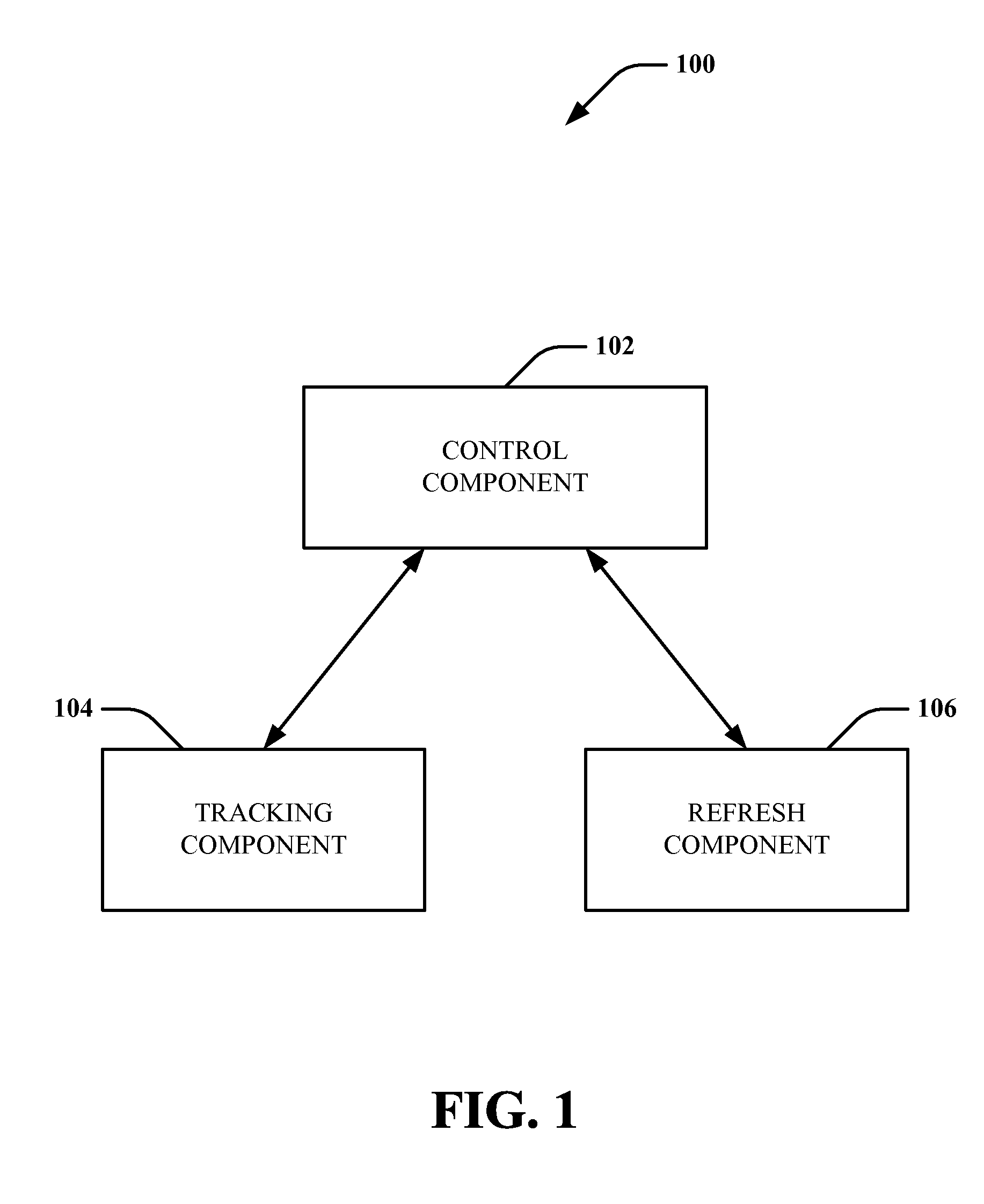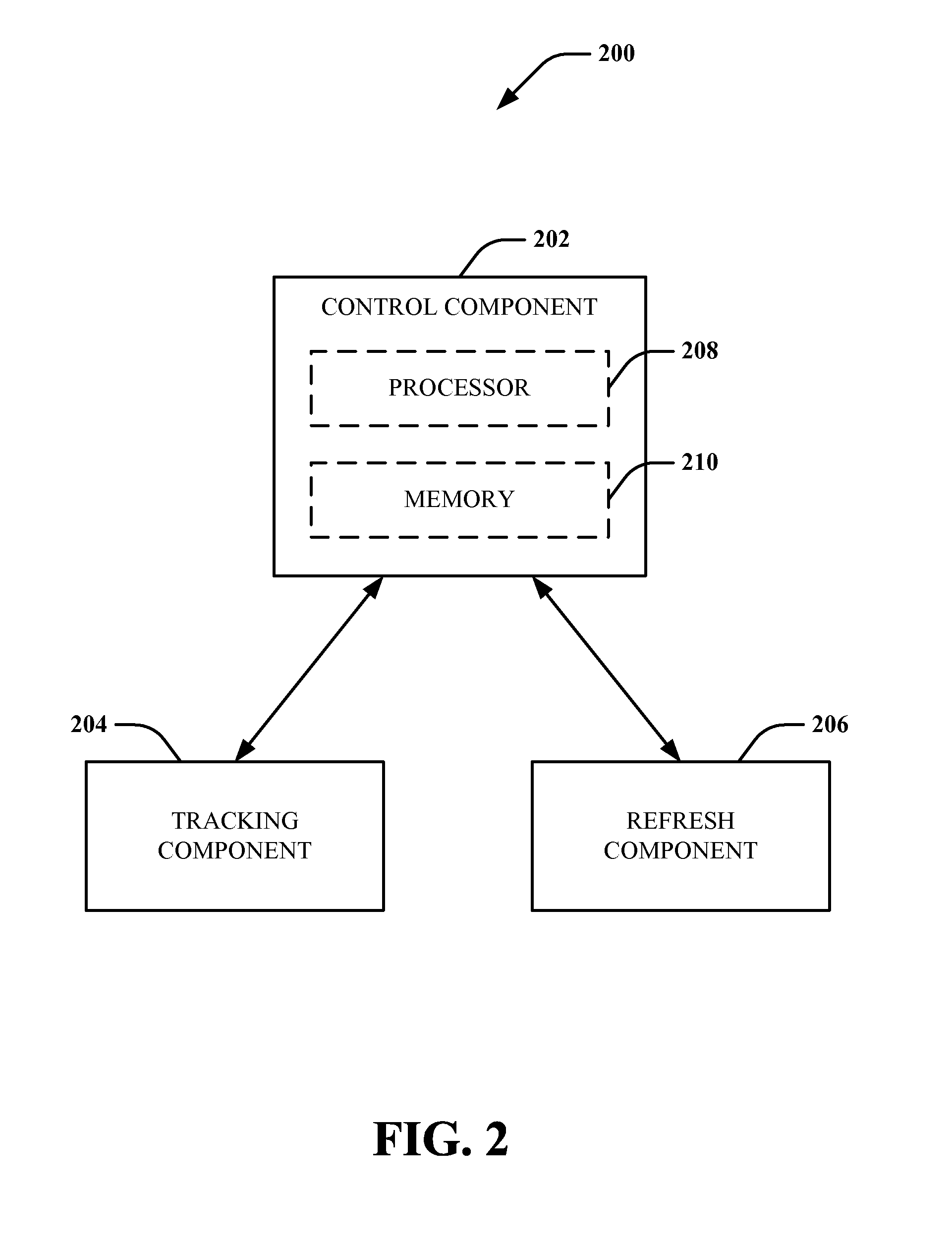Use of periodic refresh in medium retention memory arrays
a technology of memory arrays and periodic refreshes, which is applied in the field of memory cell arrays, can solve the problems of slowness of other types of storage devices, reduce the efficiency of circuit design, and increase costs, so as to facilitate accurate determination of appropriate time, prolong the duration of data retention, and mitigate the occurrence of lost and/or corrupted data
- Summary
- Abstract
- Description
- Claims
- Application Information
AI Technical Summary
Benefits of technology
Problems solved by technology
Method used
Image
Examples
Embodiment Construction
[0022]The present invention will now be described with reference to the drawings, wherein like reference numerals are used to refer to like elements throughout. The present invention will be described with reference to systems and methods for extending polymer memory retention time potentially indefinitely via memory refresh. It should be understood that the description of these exemplary aspects are merely illustrative and that they should not be taken in a limiting sense.
[0023]The term “component” refers to a computer-related entity, either hardware, a combination of hardware and software, software, or software in execution. For example, a component can be a process running on a processor, a processor, an object, an executable, a thread of execution, a program and a computer. By way of illustration, both an application running on a server and the server can be components. A component can reside in one physical location (e.g., in one computer) and / or can be distributed between two ...
PUM
 Login to View More
Login to View More Abstract
Description
Claims
Application Information
 Login to View More
Login to View More - R&D
- Intellectual Property
- Life Sciences
- Materials
- Tech Scout
- Unparalleled Data Quality
- Higher Quality Content
- 60% Fewer Hallucinations
Browse by: Latest US Patents, China's latest patents, Technical Efficacy Thesaurus, Application Domain, Technology Topic, Popular Technical Reports.
© 2025 PatSnap. All rights reserved.Legal|Privacy policy|Modern Slavery Act Transparency Statement|Sitemap|About US| Contact US: help@patsnap.com



